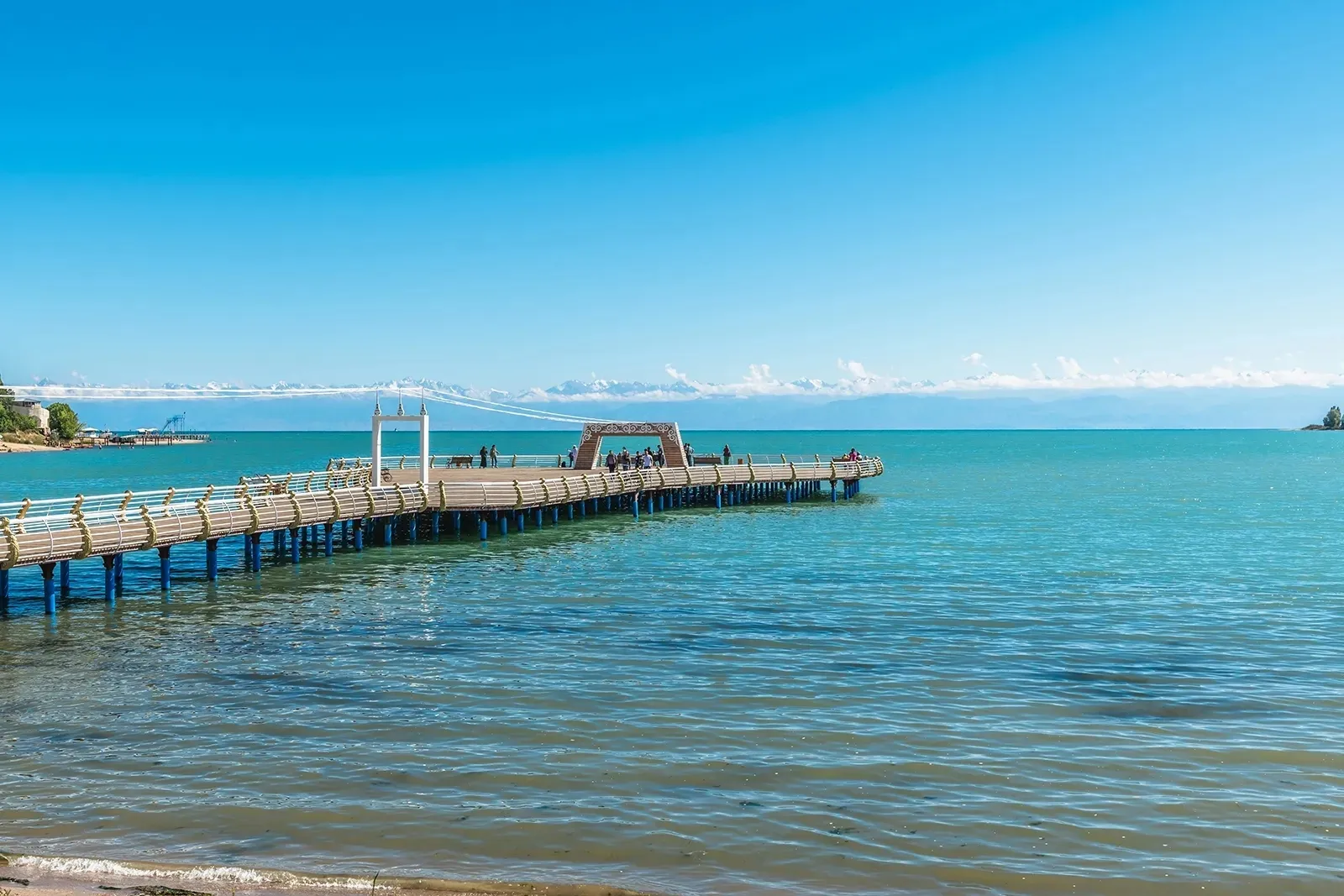Cholpon-Ata
Cholpon-Ata is the most famous resort city on the shore of Lake Issyk–Kul. Once upon a time, caravans of the Great Silk Road passed through Cholpon-Ata. Tens of thousands of tourists from all over the world come to Cholpon-Ata today. The city is famous for its clean sandy beaches and transparent lake. On the northern shore of Lake Issyk-Kul, Cholpon-Ata is known with its beautiful beaches and clear waters. The city also offers attractions such as the Petroglyphs Open-Air Museum, showcasing rock carvings dating back to the Bronze Age, as well as beach tourism, spa resorts, and water activities. The nearby mountains also offer opportunities for hiking and paragliding. Its proximity to Bishkek and Issyk-Kul International Airport makes it easily accessible to tourists.
One of the most significant historical aspects of Cholpon-Ata is its rich archaeological heritage, particularly the ancient petroglyphs that can be found in the region. These rock carvings, some of which date back to the 2nd millennium BCE, reflect the area's long history of human settlement and cultural activity. Although they predate the Silk Road, these petroglyphs are a testament to the deep historical significance of the region as a crossroads of ancient cultures.
The presence of these petroglyphs near Cholpon-Ata suggests that the region was a place of cultural and spiritual significance long before the Silk Road became an important trade route. The carvings depict scenes of hunting, religious rituals, and daily life, and they offer a glimpse into the ancient civilizations that once inhabited the area.
Lake Issyk-Kul, near Cholpon-Ata, played a crucial role in the Silk Road’s development. It provided a vital source of fresh water and rest for caravans traveling through the harsh terrain of Central Asia. The lake's shores, including the area around Cholpon-Ata, were ideal for grazing animals, making it a natural stopping point for Silk Road traders transporting goods between East and West.
Furthermore, archaeological evidence suggests that the Issyk-Kul region was home to a number of ancient trade settlements that interacted with the Silk Road.





